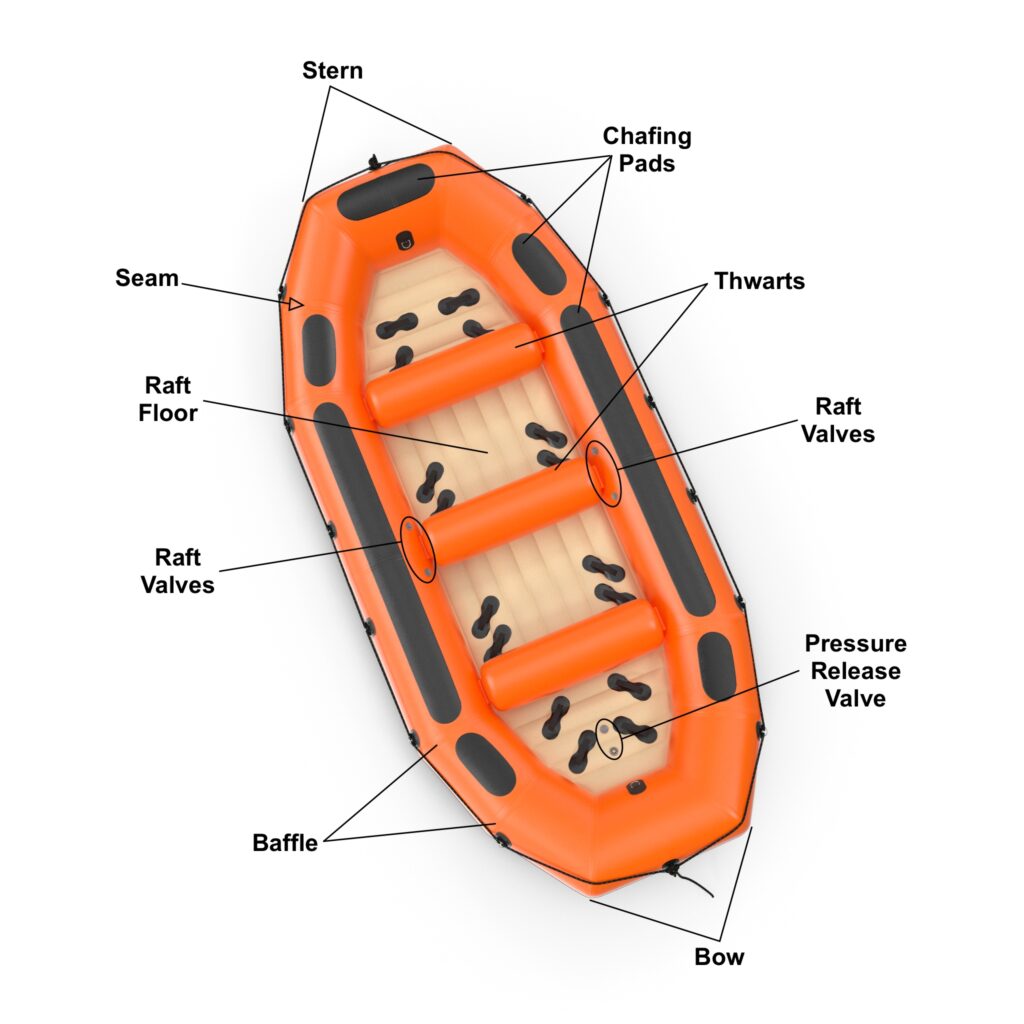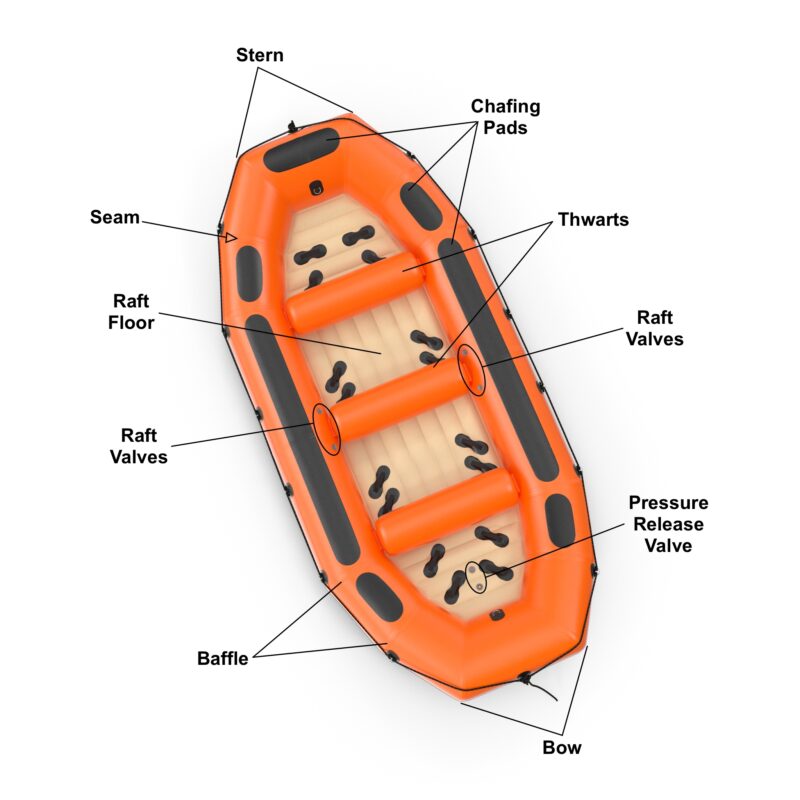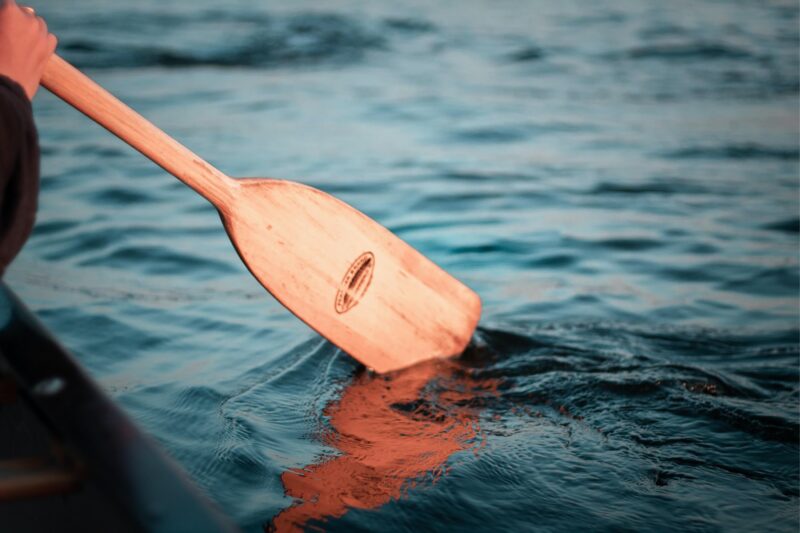When it comes to river rafting boats, the inflatable raft has fundamental elements that every member of a rafting team should know. In today’s blog, we’ll diagram those essential elements on a raft, pointing out and describing each area, including but not limited to:
- Bow of a raft
- River raft stern
- Chafe pad
- The thwart
- Raft tube
- A baffle
- Seams
- Raft Floor
- Pressure release valve

River Rafting Boat
Most novice river-rafters in the four states region of U. S. know the bow and the stern area on a river raft. As the sport has grown and gained popularity, raft designs have evolved to meet the varying river conditions.
So whether you’re rafting down the calm waters of the Elk River near Noel, Missouri, or rafting the class I rapids of the Big Sugar near Pineville, Missouri, here are the essential design elements of a river raft.
Bow of a Raft
The front of a raft, or any watercraft, is known as the bow. The bow gives a raft lift to go over the waves, providing a drier float trip. There are also low-rise rafts commonly used along the Elk River, which is a calm water float trip.
River Raft Stern
The back of a raft is known as the stern. It’s commonly where a river guide would sit to perform master maneuvers for steering the boat on a whitewater rafting trip. But when it comes to the easy-flowing waters of the Elk River and the Big Sugar, you can self-guide your river float.
Chafe Pad
The chafe pads lower the friction caused by wear and tear since this is where you sit and paddle in a river raft.
The Thwart
The cross-section pieces are known as thwarts, which are positioned perpendicularly to the raft tubes to add rigidity to the raft. In addition, thwarts can act as a foothold to give paddlers leverage and support in swift-moving currents.
Raft Tube
All river rafts get designed with an air-filled tube, which gives a raft its buoyancy to stay afloat on a river. The perimeter tube gets subdivided into individual sections. The minimum diameter is 15 to 16 inches. The more surface area, the greater the flotation capacity.
A Baffle
The sections around the perimeter of the raft are the baffles, essentially individual chambers of air. A single raft can have as many baffles as needed, from bow to stern, to encompass the entire floor of a raft to hold 2 to 8 people. If one chamber, or baffle, gets punctured, the raft will stay afloat.
Seams
Each baffle gets conjoined through a specialty welding process that fuses two baffles that form the seams between each baffle.
Raft Floor
Like the baffles, the raft floor gets adhered to the bottom of the tube. Depending upon a specific raft’s design, the floor is sometimes wrapped entirely around the outside of the tube for added strength for whitewater rafting. However, the rivers of Southwest Missouri are not known for having wild whitewater rafting.
Pressure Release Valves
Also, a feature of a raft floor is the pressure-release valves found commonly on self-bailing rafts. Valves can get checked easily for leaks by sitting on the sides to listen for hissing.
Raft Valve
Inside the raft are side valves too. Although these valves can get blocked by gear in a loaded raft, the valves should be readily accessible in the event of over-inflation, or there’s an urgent hot air expanse that needs to be released.
Book Your Next River Float Trip
Book your next river float at Lazy Days Resort near Noel, MO, your premier rental location for river float trips. They also offer full hookup RVing, tent campsites, or cabin stays. Book your stay today at Lazy Days Resort and Campground today!
Getting to Lazy Days Resort & Campground is a one-minute drive southwest of Interstate 49. Take exit 5 at mile marker 6. The resort is between the charming towns of Noel and Pineville, Missouri.

